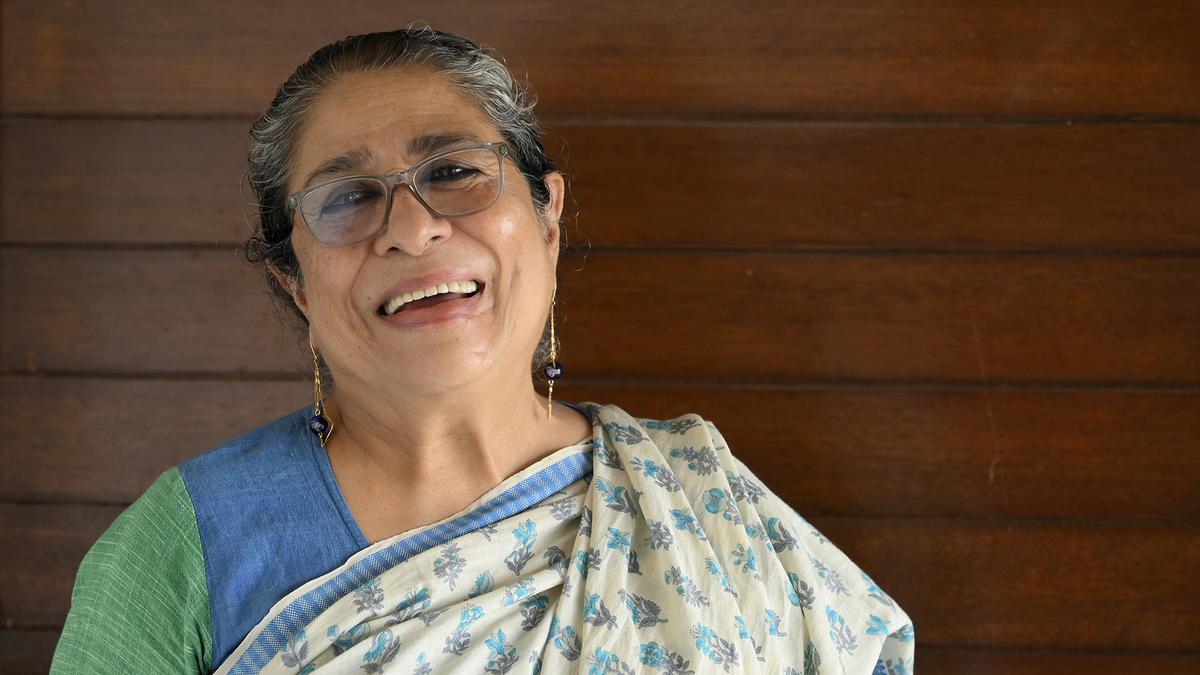
Bengaluru | ‘The dream is not over’: Arundhati Nag on 20 years of theatre space Ranga Shankara
The Hindu
Arundhati Nag reflects on 20 years of Ranga Shankara, dreams of a brighter future with government and corporate support.
As Ranga Shankara, one of Bengaluru’s cherished theatre spaces, prepares to celebrate its 20th anniversary this month, its founder, theatre and film personality Arundhati Nag, finds herself in two places at once. Contemplating the past and the realisation of a dream, and envisioning a bigger, brighter future with the support of the government and corporate patrons. Amid preparations for the Ranga Shankara Theatre Festival that kicks off this month, Nag takes some time off to share her ambitions for the space while remaining committed to keeping Ranga Shankara accessible to all. Edited excerpts:
Not many people have the privilege of dreaming and seeing it come true. I would say I am in the middle of it now. The dream is not over, there is so much more a space like Ranga Shankara can do. Hopefully, there will be more layers added, as theatre changes and grows.
The financial concern never really left the table, which in a way is good. Because one has seen many institutions go backwards with tremendous financial comfort. But at the same time, it has not been easy. It is a lean and mean organisation we run with just nine people, with each person doing the job of two or three persons. Salaries are not great. But compared to other theatre institutions, we are at a fairly decent level.
It is not fair to expect the government to do everything. Yes, the government has money, it should be funding the arts, which it is. Ranga Shankara has been constructed on a civic amenity site; no other state in the country has the facility of such a site for an art space. There are schemes by the government for artists, who must know how to get them. When it comes to corporates, Bengaluru is blessed. We have people such as Sudha Murty, Rohini Nilekani and Kiran Mazumdar Shaw, the first wave of IT-rich people who are educated and have a sense of culture. They all came forward and funded Ranga Shankara in many ways. In the old days, we had kings. Who are the kings of today? It is the corporates. So, they should have a mandate to make sure art survives, like they have for eliminating poverty and making education accessible.
For 20 years, we have not increased the rent at Ranga Shankara. Twenty years ago, our auditor friend fought with Suri (S. Surendranath, theatre maker and trustee at Ranga Shankara) and me, when we said ₹2,500 would be the rent per show. He felt it was too little. We said our community cannot afford more. But today when we are planning to increase the rent a little, our auditor says no. He says you will defeat the purpose. Our mandate is to make more theatre happen, so the only way to keep this going is to go find more money. That is the secret.
This was the idea 20 years ago, when I presented the plan to the then chief minister S.M. Krishna. I told him Bengaluru needs four such theatres. But we did not have the money to make four happen. Ideally, like for theatre, there should be one for dance, music, fusion... where you can rotate programmes and focus on the art form. I can share how we built Ranga Shankara, and how we keep it running, but it is time someone else came forward and created more spaces like this.
By the time I decided to build Ranga Shankara, I had already done a lot of theatre. So, I was a very satisfied actor. When I got offers for two big Hindi films — Lagaan and Dil Chahta Hai — I said no, because I did not want to be absent when someone showed up, offering to fund Ranga Shankara. I told Aamir Khan that I would get the chance to play the role of a mother in many films, but I would not get the opportunity to do this again.











